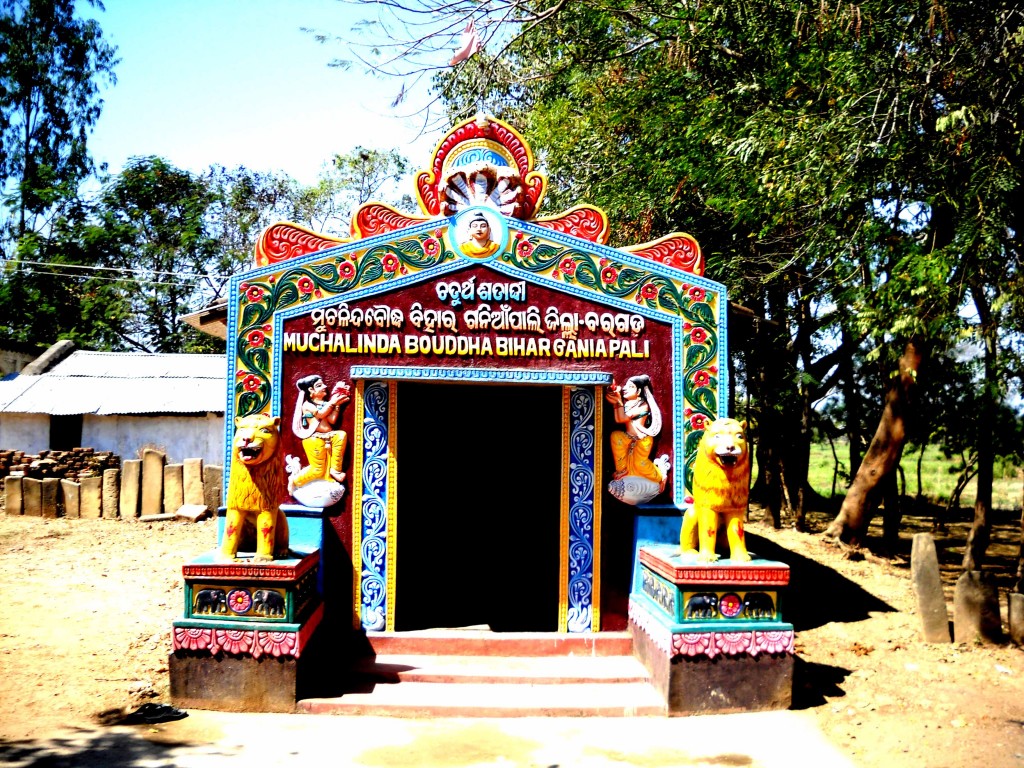Ganiapali is one of the rare Muchhalinda Buddha Vihars in India. The site was excavated under the auspices of P.G.Department of History, Sambalpur University; Odisha in 1978. This was a Muchalinda Buddha monastery of Gupta period. It covers an area of one and half acres. It is situated near the convergence of the Ang and the Magar rivers. Now it is under Gaisilat block, Padampur Sub-Division and in the district of Bargarh.
There are enough evidences to establish that Buddhism was widespread in West Odisha from the 2nd century BC to the 6th century AD. In this period Nagarjuna used to stay at present Narsinghnath. Nagarjuna was a great expounder of the Madhyamika Philosophy of Mahayana Buddhism. Chinese pilgrims Hieun Tsang and Itsing have written that king Satakarni (106-130 A.D.) built a magnificent Vihara for his philosopher friend Nagarjuna at Po-lo-mo-lo-ki-li (Parimalagiri). The mentioned Po-lo-mo-lo-ki-li (Parimalagiri) is present day Gandhamardhan Hill range. At that period this region was under Daksina Kosala and was ruled by the Satavahana king Gautamiputra Satakarni.
It is believed that the structure of the Buddhist monastery was originally a multi-storied one, made of well-burnt brick. But the foundation plinths in some places have been destroyed due to brick robbing. A chaitya hall, traces of the walls of the cells and chambers of the Bhikshus and mendicants of the monasteries are also noticed. The excavation has clearly revealed some dormitory like buildings on the northern side and small chambers and cells clustered together on the southern side. Besides the monasteries, two life-size Buddha images, one the Muchalinda Buddha and the other depicting Buddha in the pose of delivering the first sermon at Sarnath, are found on a small stone mandapa.
Stylistically, these images can be dated to the Gupta Period of c 4th – 5th century AD. Besides, a small stone plaque of reddish chlorite depicting Buddhist images of Hariti and Panchika, of early medieval period is also recovered from this site.
In the Buddhist text Vinayapitaka, it is mentioned that the serpent king Muchalinda protected Lord Buddha. Buddha was troubled by rain and storm during the second week following his enlightenment. The serpent raised its hood over his head and created an umbrella. The local people worship this statue as Naga-Muni (the serpent sage).
Ganiapali Muchalinda statue was located for the first time by the celebrated art historian Charles Fabri in 1961. He has dated this image to the 5th to 6th century A.D. The name of the village Melchhamunda might have been a local twist of Muchalinda.
Systematic exploration and excavation in this area will positively throw new light on the history and culture of this area.

